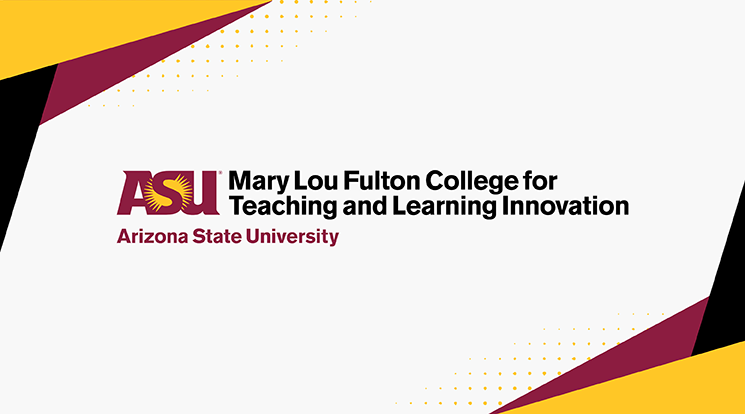Developing a culture of creativity instead of compliance in educators

Creativity is increasingly thought to bear significant weight in education. This key shift — one that Mary Lou Fulton Teachers College is deeply involved in — goes beyond the current emphasis on compliance. This shift enables fostering a culture of creativity.
“As an educator, the only thing you really are in control of is the learning environment,” Punya Mishra, associate dean of scholarship and innovation and professor at Mary Lou Fulton Teachers College says. That statement raises the question: What should that environment look like, then?
As it turns out much of the existing research in the field of creativity has focused on individual, psychological and personality variables, which while important, offer little practical advice to educators. The intentional design of learning environments is an area that has not received much attention. Mishra, along with a colleague, recently proposed an instrument to evaluate classrooms for how conducive they are to creativity. The tool by focuses on three key aspects of a learning environment: learner engagement, physical environment and learning climate.Key to a creative learning climate is the role of the teacher. Danah Henriksen, assistant professor of educational leadership and innovation at MLFTC says researchers have found that teacher creativity is an important factor in promoting student creativity. She studied eight National Teacher of the Year Award winners, interviewing them about their classroom practices, personal hobbies and interests, their views on creativity and how they infuse it into the classroom.
Henriksen found four themes each of these highly-successful and creative teachers implemented in their classrooms:
- Weaving their own creativity and interests into their teaching
- Making cross-disciplinary connections to the content they’re teaching
- Anchoring school subjects in real-world application
- Taking intellectual risks
Transdisciplinary creativity
Henriksen also identified seven broad-level thinking skills that creative people generally use, according to research: observing, patterning, abstracting, embodied thinking, modeling, play and synthesis. Each of the teachers taught different grade levels, different subject matters and in varying settings, but they all had a commonality in implementing the above skills, albeit in different modes, such as pattern thinking or using play in the classroom. Henriksen says, “Each of them had a wide range of interests outside of the classroom, whether it was yoga, music or art, and found a way to bring those interests into their teaching.”
Mishra makes sure to point out, “It’s important to keep in mind that not every teacher used all seven of these skills all the time. They pick and choose among them, depending on context, personal experience and work they feel more comfortable with, and so on.” He goes on to suggest, “A lot of what ASU is very good at is this whole idea of transdisciplinary creativity. Transdisciplinary creativity is about ways of thinking that cut across the disciplines.” For example, patterning is different in math than it is in music, but the knowledge and skill relate to both.
Another way to think about transdisciplinary, Mishra says, is in how we construct curricula. He is working with the seventh- and eighth-grade curriculum in the Miami/Globe school district, as part of the community design work the Mary Lou Fulton Teachers College Office of Scholarship and Innovation is leading. Instead of teaching one thing in math and something completely different in history, the design team and teachers are framing every subject within early 20th century U.S. history. This means that the physics teacher, math teacher, language arts teacher, etc. will frame their curriculum within this broader context — from the beginning of World War I to the end of World War II.
Another important issue in considering creativity in the classroom is how creative products or output is evaluated, as this is often seen as being subjective. This becomes particularly important in classrooms where students are engaged in designing creative products. Henriksen and Mishra have proposed an open-ended framework that can help teachers evaluate such projects: NEW (Novel, Effective and Whole).
Freedom and empowerment
Finally, it is important that teachers have the freedom to play and experiment. Not every teacher may be given the freedom and feel empowered to make a change such as this. Both Henriksen and Mishra say, first, the administration has to create a supportive environment. “It’s looking at an issue of systemic change and culture change and starting from places of leadership and power where administrators understand how these things work and are able to empower teachers,” Henriksen explains.
Next, on her agenda, Henriksen says she plans to do this same type of research with creative educational leaders. “We need to think beyond the individual teacher if we expect some kind of change to happen.”